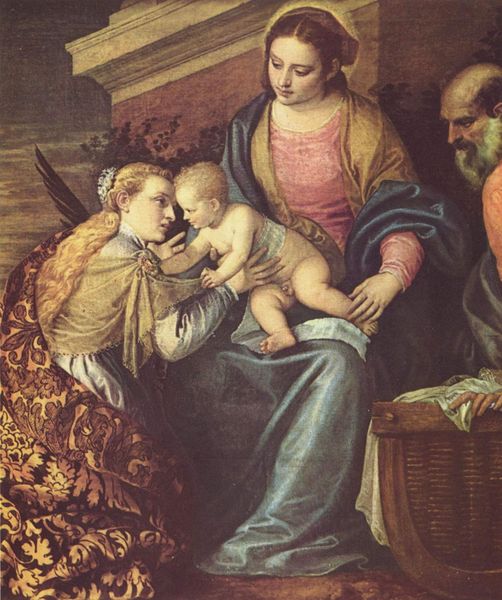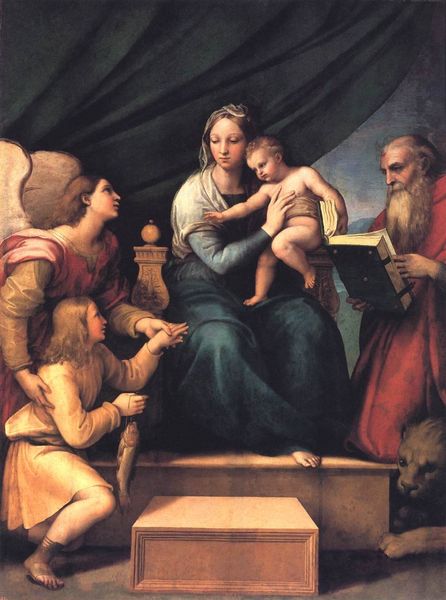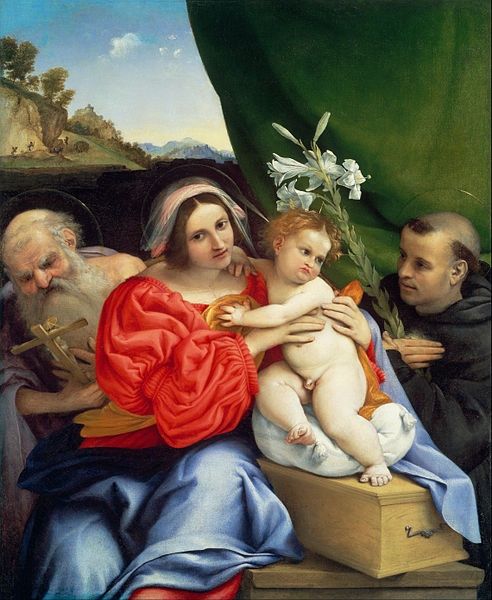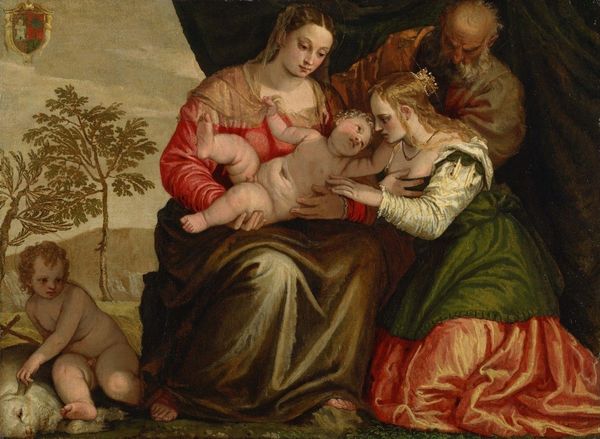
painting, oil-paint
#
portrait
#
high-renaissance
#
allegory
#
narrative-art
#
painting
#
oil-paint
#
landscape
#
oil painting
#
classicism
#
group-portraits
#
christianity
#
history-painting
#
academic-art
#
italian-renaissance
Dimensions: 60 x 75.5 cm
Copyright: Public domain
Editor: Parmigianino’s “Madonna with Saint Zacharias," painted around 1530. It’s currently hanging in the Uffizi Gallery in Florence. It feels almost like a snapshot, posed yet somehow intimate. I’m struck by the muted color palette, almost subdued, despite the vibrancy usually associated with Renaissance painting. What's your take? Curator: Ah, Parmigianino. He possessed this remarkable ability to blend serenity with an almost unsettling sweetness, didn’t he? This piece always makes me ponder the weight of prophecy. Old Zacharias here, gaze averted, book in hand... He represents, to me, a reluctant acceptance of a destiny far beyond his understanding. I wonder, do you find his stillness reassuring, or something more melancholy? Editor: Definitely a little melancholy. He seems resigned, rather than joyous. There's also a slightly unreal quality about the whole composition – the figures seem elongated and elegant, yet their placement is a bit… off. Curator: Precisely! And it’s this “off-ness” that really sings to me. The High Renaissance aimed for perfect balance, mathematically precise perspective. Parmigianino nudges that ideal off its axis, prefiguring Mannerism. That elongated elegance you noted? It becomes an end in itself, a visual poem celebrating refinement above all else. Does it challenge our expectations of beauty, perhaps? Editor: It does, actually. I was expecting a more overt display of divine glory, I guess. It’s interesting how Parmigianino subtly undermines that. Curator: Yes! Perhaps a bit like serving a divine banquet, but on porcelain plates that are just slightly too delicate. In short: divine, and slightly unsettling. The best kind of art, in my book. Editor: I see what you mean! It makes you question the perfection you’re taught to expect. That unexpectedness makes the piece far more memorable, really. Curator: Exactly! Remember, it's okay to feel a little puzzled. Art is often at its best when it makes us think twice and look closer.
Comments
No comments
Be the first to comment and join the conversation on the ultimate creative platform.













